History
The history of the Israeli-Palestinian conflict
Part of: Hey Alma’s Guide to the Israeli-Palestinian ConflictDive into the history of the Israeli-Palestinian conflict from 1948 to the present. (To see history before 1948, go here.)
JUMP AHEAD 1956 / 1967 / 1978 / 1988 / 1993 / 2000 / 2014
1948
May 14
State of Israel established when the Israeli Declaration of Independence is proclaimed. The text declares the State of Israel open for Jewish immigration and that the state will “ensure complete equality of social and political rights to all its inhabitants” regardless of religion, race, or sex.
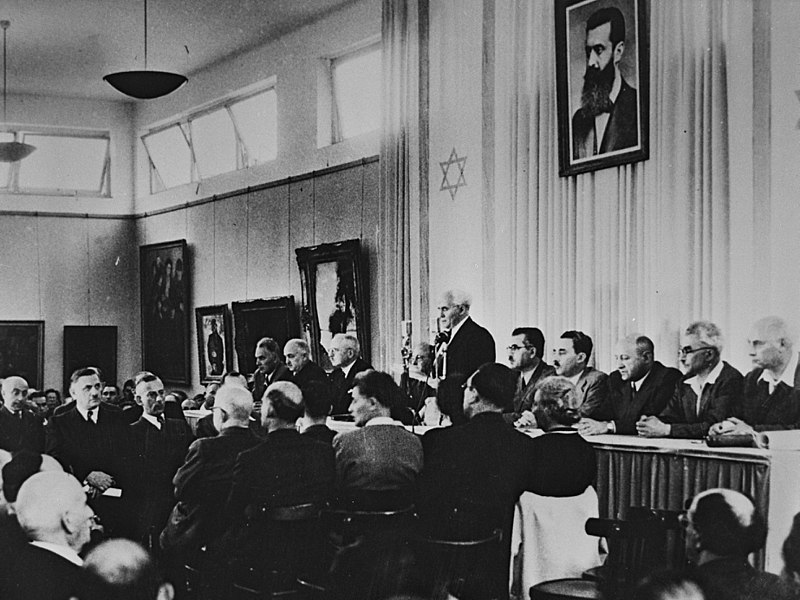
The United States recognizes the provisional government of Israel. (Read more in America’s relationship to Israel.)
Expulsion and exodus of Jews from Arab countries begins; the first wave lasts through 1951. With the establishment of the State of Israel, Jews leave Arab countries by the thousands.
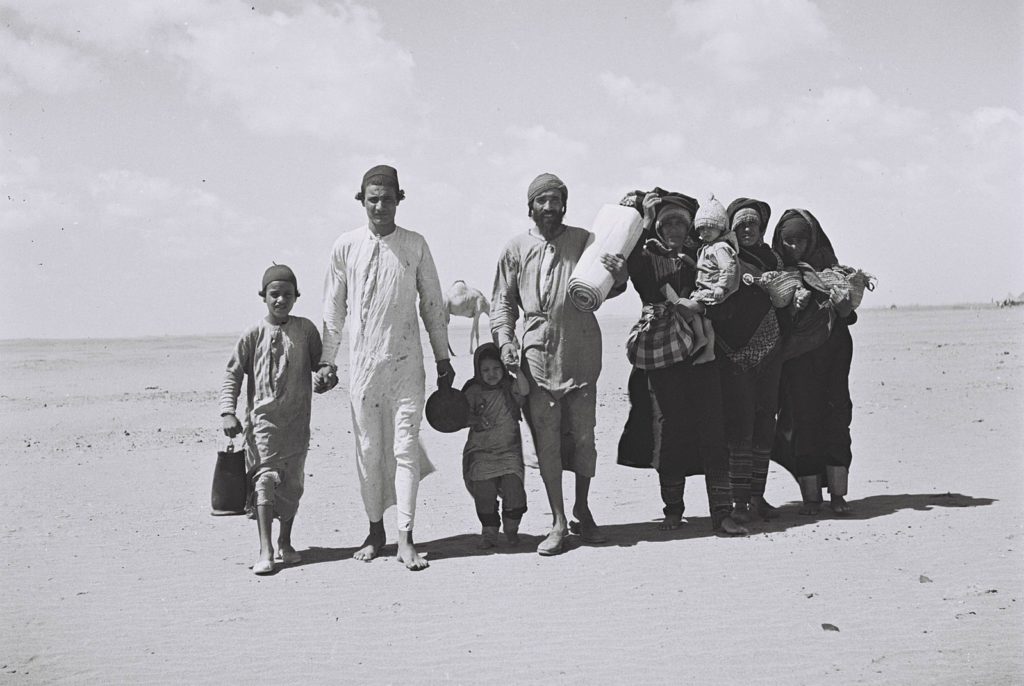
May 15
Egypt, Jordan, Syria, Lebanon, and Iraq invade Israel. Additional troops come from Saudi Arabia, under Egyptian command.
June
Altalena Affair: a confrontation between Israel Defense Forces and the Irgun. Sixteen Irgun fighters and three IDF soldiers are killed. The event is significant because it shows that David Ben-Gurion is prepared to fight other Jews to establish a single authority for the new state.
December
UN passes Resolution 194, affirming the right of return of Palestinian refugees.
1949
First elections in Israel: The first Knesset is elected, with the Labor Zionist Mapai winning the majority of votes. David Ben-Gurion forms the first government. (Read more about how Israeli politics work here.)
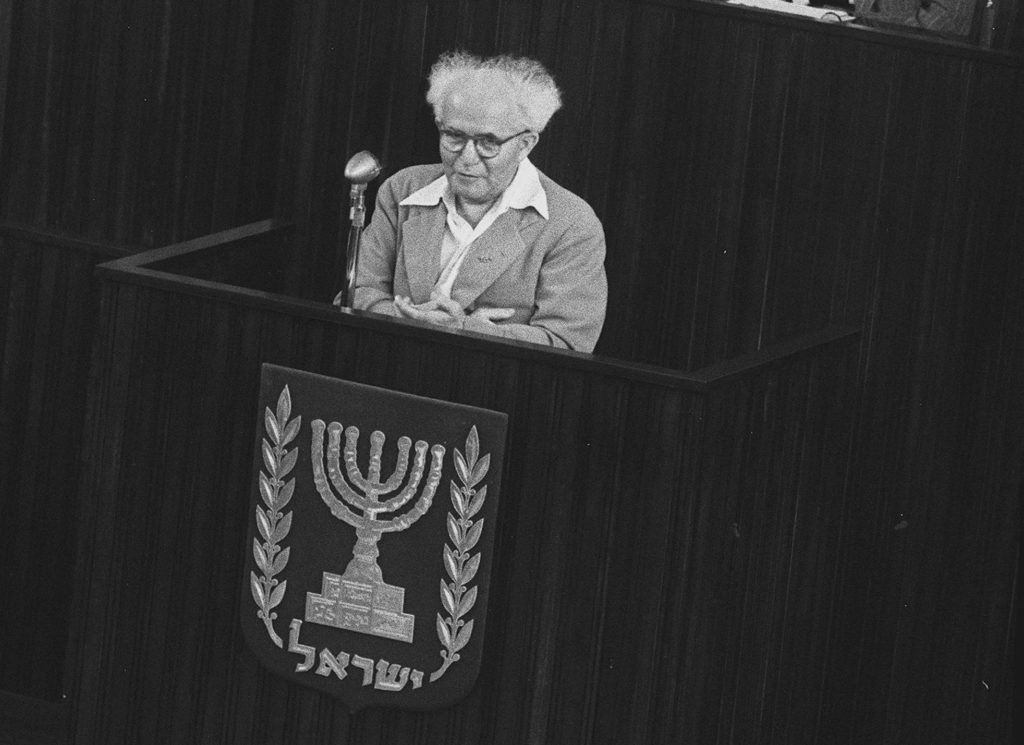
Armistice signed with Egypt in February, and in the months that follow, Israel signs armistice agreements with Lebanon, Jordan, and Syria.
Israel admitted to UN a little under a year after the state is established.
Operation Magic Carpet starts was the operation to airlift Yemenite Jews to Israel. 49,000 Jews come to Israel between 1949 and 1950 as a result of this program.
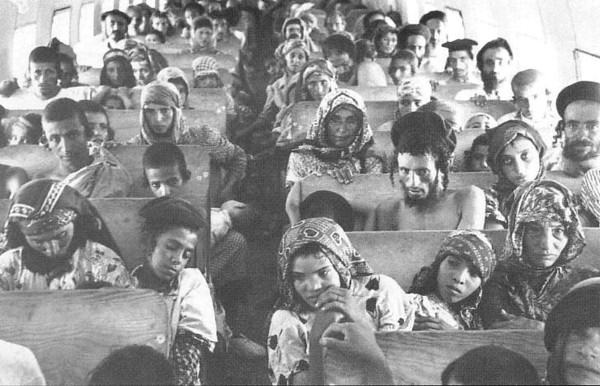
1950
Jordan formally annexes the West Bank, a move that gives the residents of the West Bank Jordanian citizenship.
Law of Return passes, stating “Every Jew has the right to immigrate to the country,” sparking an influx of Jewish immigrants.
1951
King Abdullah I of Jordan is assassinated while visiting al-Aqsa Mosque in Jerusalem by a Palestinian nationalist who views his cooperation with Israel as a betrayal.
Operation Ezra & Nehemia airlift more than 100,000 Jews from Iraq through Iran and Cyprus between 1951 and 1952. The operation is named after Ezra and Nehemiah, who led the Jewish people out of Babylonian exile (poetic!).
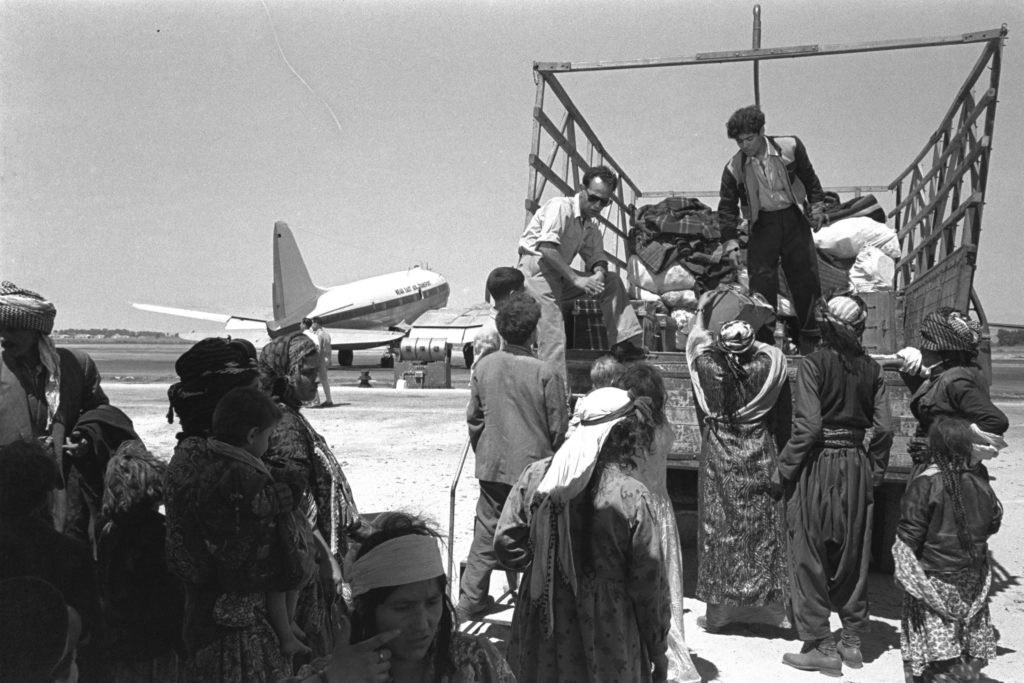
1952
Gamal Abdul Nasser comes to power in Egypt under Nasser; the Arab League puts the Gaza Strip under Egyptian control officially.
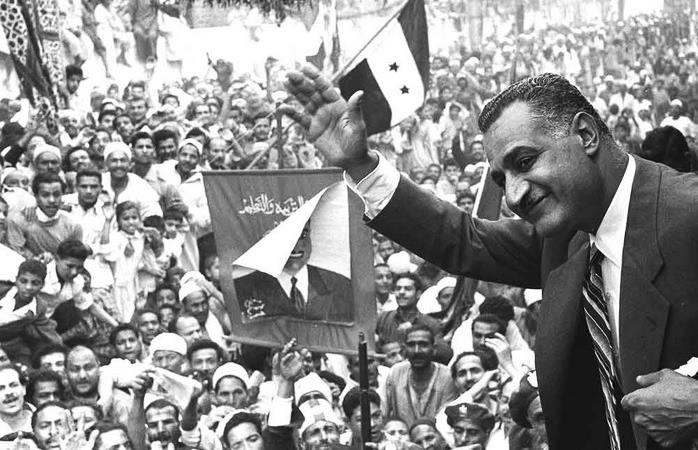
1953
King Hussein comes to power in Jordan at age 17, increasing problems with the Palestinians living in Jordan who are angry at their inferior status.
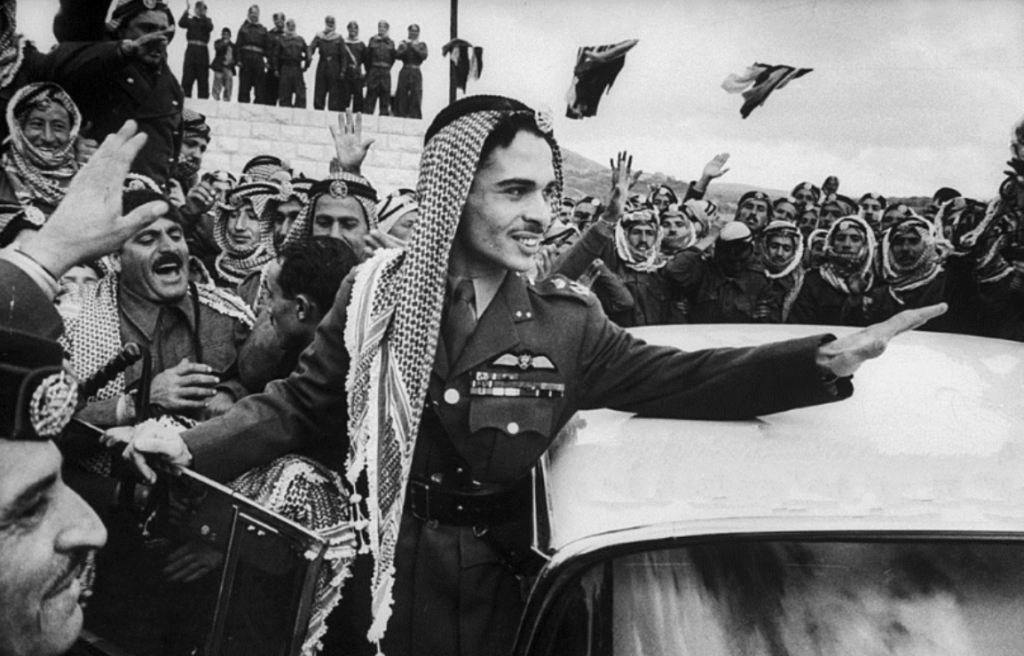
German reparations agreement: Israel signs a reparations agreement with West Germany. This is a controversial move, with some Israeli political figures claiming that it amounts to taking blood money.
1954
Lavon Affair: a failed Israeli false-flag operation in Egypt (lasts through 1955) wherein Egyptian Jews are recruited to foment instability in Egypt by planting bombs and blaming the Muslim Brotherhood.
1956
Nasser nationalizes the Suez canal: This move eventually leads to the Suez Crisis, which erupts after Israel, with backing from Britain and France, invade Sinai on October 29, 1956, as a pretext for those countries to intervene to protect the canal zone.
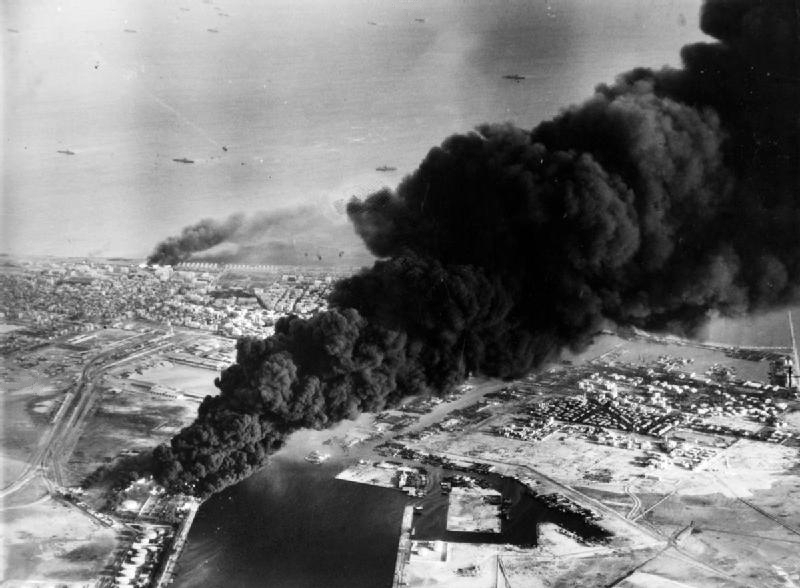
Kafr Qasim massacre: Israeli border police kill 48 Arab civilians deemed in violation of an Israeli-imposed curfew.
1957
Israel withdraws from the Sinai Peninsula in March, officially ending the Suez Crisis.
1959
Fatah formed by Yasser Arafat and three others in the Gulf as a Palestinian nationalist movement. (Read more about Palestinian politics here.)
1960
Adolf Eichmann is captured in Argentina by the Mossad, brought to Israel, and eventually tried and executed.
1961
Operation Yakhin (Yachin) helps Moroccan Jews emigrate to Israel; about 97,000 Moroccan Jews leave by plane and ship between 1961 and 1964.
1962
Dimona Nuclear Reactor: Israel’s nuclear reactor (in Dimona, Israel) begins operations. Israel has never formally acknowledged that it has nuclear weapons capacity.
1964
PLO Founded in Cairo: The Palestine Liberation Organization (PLO) calls for the liberation of Palestine and the destruction of Israel through armed struggle, as well as the establishment of an “independent Palestinian state” between the Jordan River and the Mediterranean Sea. (Read more about the PLO here.)
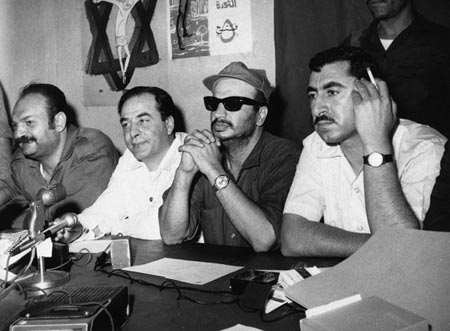
1967
May
Egypt escalates regional tensions, closes the Straits of Tiran to Israeli shipping, and expels the UN peacekeepers from the Sinai Peninsula.
June 5 — 10
Six-Day War: To preempt Egyptian strikes, Israel launches air strikes against Egypt, taking Egypt by surprise and destroying nearly its entire air force within 24 hours. By the end of the war, Israel controls the Gaza Strip, Sinai Peninsula, West Bank, Eastern Jerusalem, and the Golan Heights.
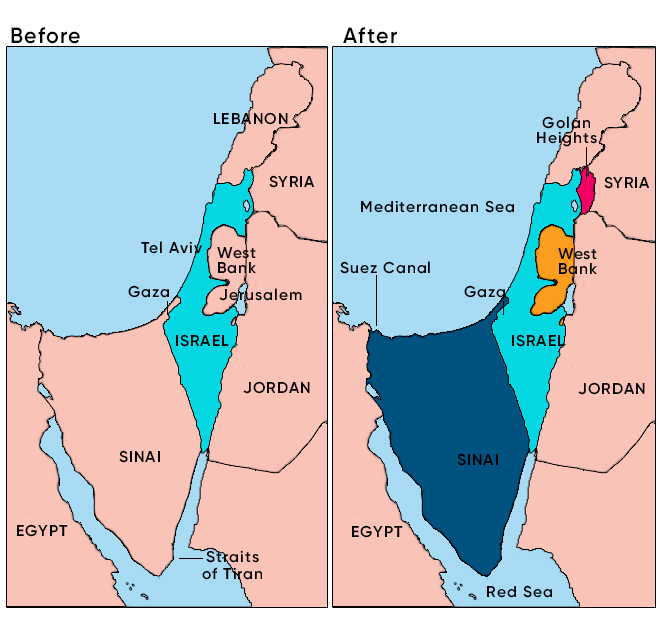
The new territories will completely alter the political conversation in Israel (and outside it). Israel considers offering the majority of the land in exchange for peace.
September
First West Bank Settlement established in Kfar Etzion, an Israeli community in the West Bank. (Read more about settlements here.)
Khartoum Resolution: The Arab League meets in Khartoum, Sudan and adopts the Three No’s:
- No peace with Israel
- No recognition of Israel
- No direct negotiations with Israel
November
UN Resolution 242 adopted, calling for Israel to withdraw from territories occupied during the Six-Day War. This formula, known as the “land for peace,” would form the basis for all subsequent efforts to resolve the Arab-Israeli conflict. (Read more about attempts to solve the conflict here.)
1968
War of Attrition begins: Egypt launches this against Israel after the Six-Day War; basically, artillery shelling into the Sinai, aerial warfare, and raids. Ends with a ceasefire in 1970.
1970
Golda Meir elected Prime Minister.
1970
Black September: King Hussein declares military rule and expels Arafat from Jordan. The Palestinian leadership flees to south Lebanon.
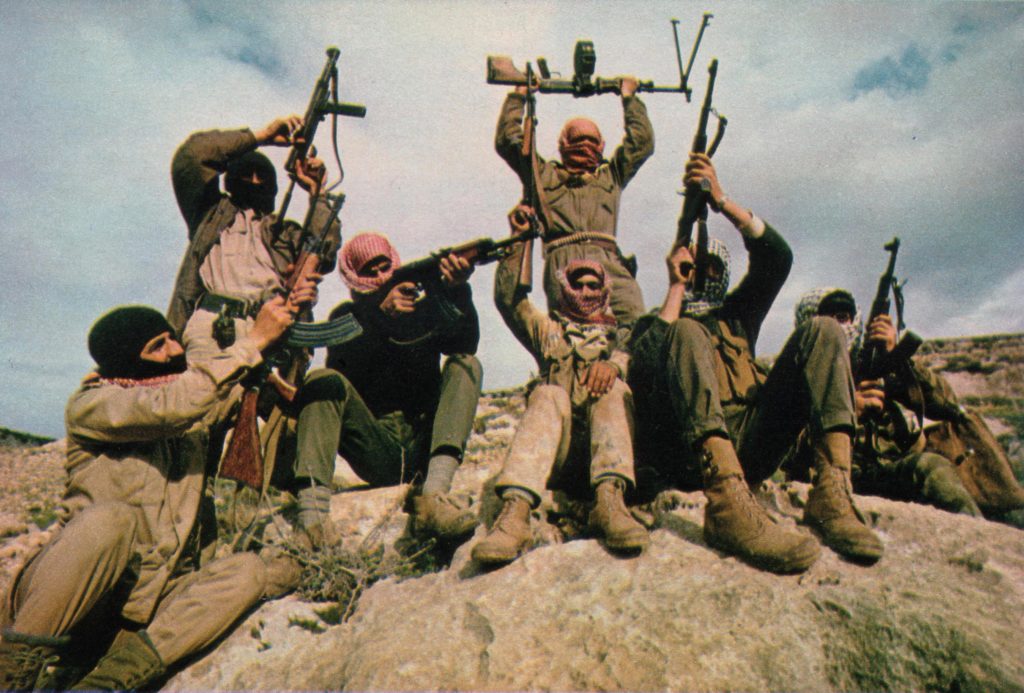
1972
Munich Olympic Massacre: Palestinian terrorists kidnap and murder 11 Israeli athletes (and one West German police officer) during the Summer Olympics. Five terrorists are killed, and the Mossad launches Operation Wrath of God to assassinate those involved.
1973
Yom Kippur War: Arab forces from Egypt and Syria lead surprise attacks on Israel on Yom Kippur, the holiest day of the Jewish year, hoping to gain back territories lost in 1967. Even though Israel eventually prevails, it’s considered a diplomatic and military failure.
1974
Arafat addresses the UN, in a famous speech: “Today I come bearing an olive branch in one hand, and the freedom fighter’s gun in the other. Do not let the olive branch fall from my hand. I repeat, do not let the olive branch fall from my hand.”
1975
Civil War breaks out in Lebanon: The PLO initially try and stay out of the conflict, but they eventually team up with the leftist Lebanese forces.
UN Resolution 3379 calls Zionism “a form of racism and racial discrimination.”
1976
Land Day protests: the first Arab general strike in Israeli history to protest Israeli expropriation of Arab land in the Galilee. “Land Day” on March 30 becomes an annual day of protest and commemoration.
Entebbe Rescue Operation: In July, an Air France plane, flying from Tel Aviv to Paris, is hijacked by a faction of the Popular Front for the Liberation of Palestine alongside German terrorists. Mossad mounts a rescue operation and rescues most of the hostages. One Israeli — Benjamin Netanyahu’s older brother, Yonatan — is killed.
1977
Likud comes to power (this is called the Mahapakh or “Upheaval”): Menachem Begin, leader of Likud, is elected, ending Labor’s dominance. The first time a right-wing party is in power in Israel.
Egyptian President Anwar Sadat addresses Knesset, signaling his willingness to make peace between Israel and Egypt.
1978
Camp David Accords: Menachem Begin and Anwar Sadat come together at Camp David with U.S. President Jimmy Carter to negotiate a peace treaty, the first ever between Israel and an Arab country. Israel agrees to withdraw from the Sinai Peninsula in exchange for peace (#LandForPeace). Begin and Sadat receive the Nobel Peace Prize.
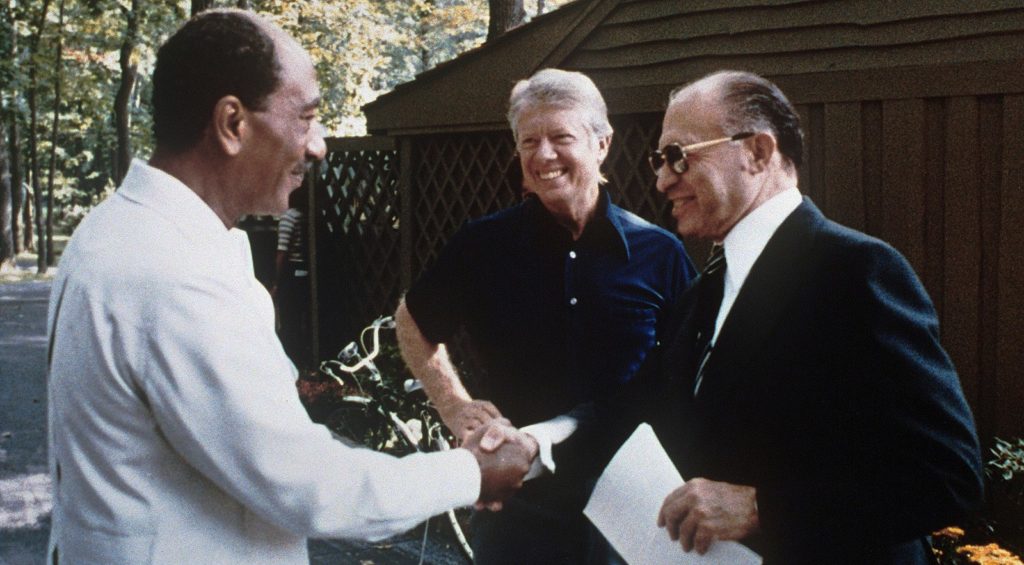
1980
Basic Law on Jerusalem (also known as the “Jerusalem Law”) passed by the Knesset, declaring Jerusalem, “complete and united,” the capital of Israel.
1981
Sadat is assassinated by a member of Egyptian Islamic Jihad, mainly over discontent over signing the Camp David Accords and the peace treaty.
Israel annexes the Golan Heights, a move not recognized by the international community.
1982
Lebanon War: Israel invades southern Lebanon after skirmishes on the border between the PLO and the IDF.
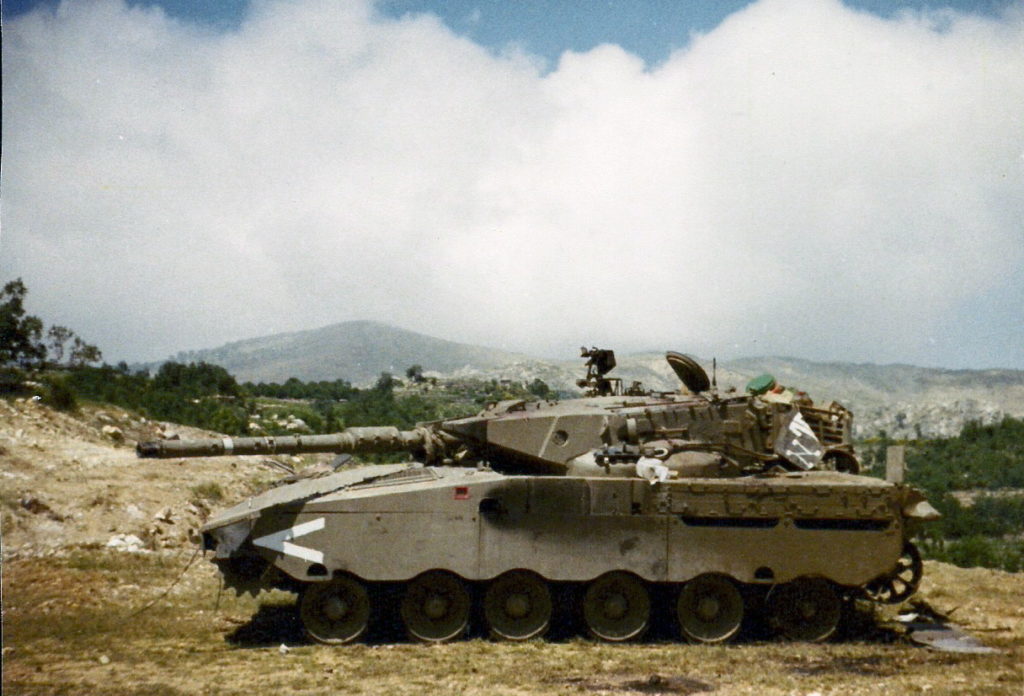
Sabra & Shatila Massacre: Christian Phalangists (allied with the IDF) murder Palestinian refugees in the Sabra and Shatila refugee camp in Beirut. An investigation finds that Israeli military personnel failed to stop this massacre and therefore bore responsibility. Defense Minister Ariel Sharon resigns.
Hezbollah founded: Muslim clerics, funded by Iran, form Hezbollah in response to the Israeli attack on Lebanon.
Great Synagogue of Rome attack: Palestinian militants attack Rome’s Great Synagogue, killing one and injuring 37.
1983
Israel withdraws from most of Lebanon in August but maintains a “security zone” in southern Lebanon.
1984
Operation Moses: the secret evacuation of Ethiopian Jews (Beta Israel/Falashas) from Sudan; over 8,000 Jews are brought to Israel.
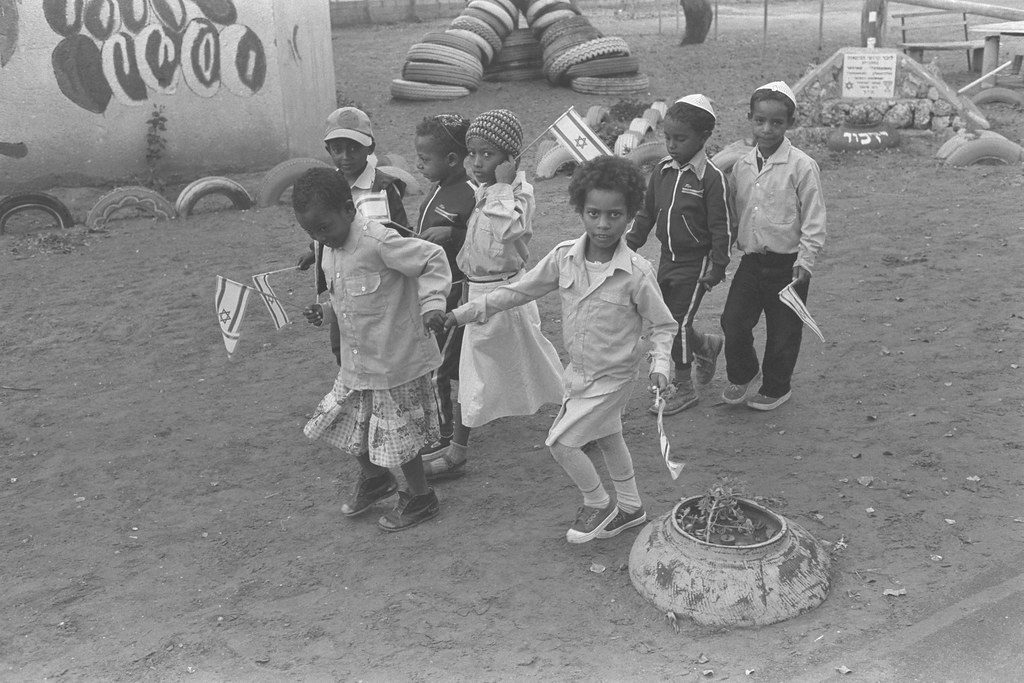
1985
Israel bombs PLO headquarters in Tunis, in retaliation for the murder of Israeli tourists on a yacht off the coast of Cyprus earlier that year.
Hezbollah releases its manifesto, with the central goal of destroying Israel.
1987
Hamas founded, as an offshoot of Egypt’s Muslim Brotherhood, after PLO begins to seek a negotiated solution with Israel. Founded by Sheik Ahmed Yassin and others, Hamas is a Sunni fundamentalist group that sought to liberate Palestine and place it under Muslim rule. (Read more about Hamas here.)
First Intifada begins, lasting through 1991. The first intifada includes riots, Molotov cocktail attacks, assaults with guns, and explosives along with other forms of non-violent resistance.
1988
Hussein gives up Jordan’s claim on the West Bank, with the exception of guardianship over Muslim holy sites in Jerusalem.
Hamas charter issued, defining Palestinian nationalism as a struggle against Islam’s enemies. Hamas calls for a rooting out of the “Zionist invasion” and “to raise the banner of Allah over every inch of Palestine.”
PLO Declaration of Independence signed in Algiers, Algeria. The Palestinian National Council (PNC) votes to endorse UN resolution 242, which some understand as implicit recognition of Israel.
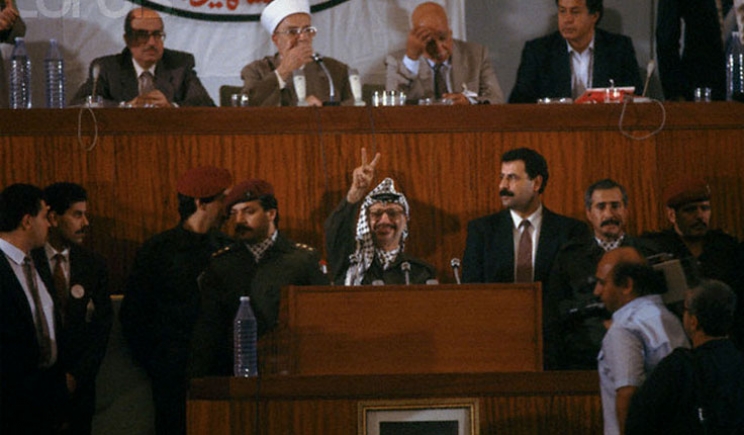
1989
Post-Soviet aliyah: After Soviet premier Mikhail Gorbachev opens the borders of the Soviet Union, thousands of Soviet Jews flee. About 979,000 make aliyah to Israel between 1989 and 1991.
1991
Scud Missile Attacks: Iraq attacks Israel with 39 Scud missiles in the course of the Gulf War.
Operation Solomon: Israel secretly airlifts nearly 15,000 Ethiopian Jews (Beta Israel) to Israel in a 36-hour period.
Madrid Peace Conference: The U.S. and Soviet Union jointly organize a meeting between Israeli and Palestinian leaders (and leaders from Lebanon, Jordan, and Syria).
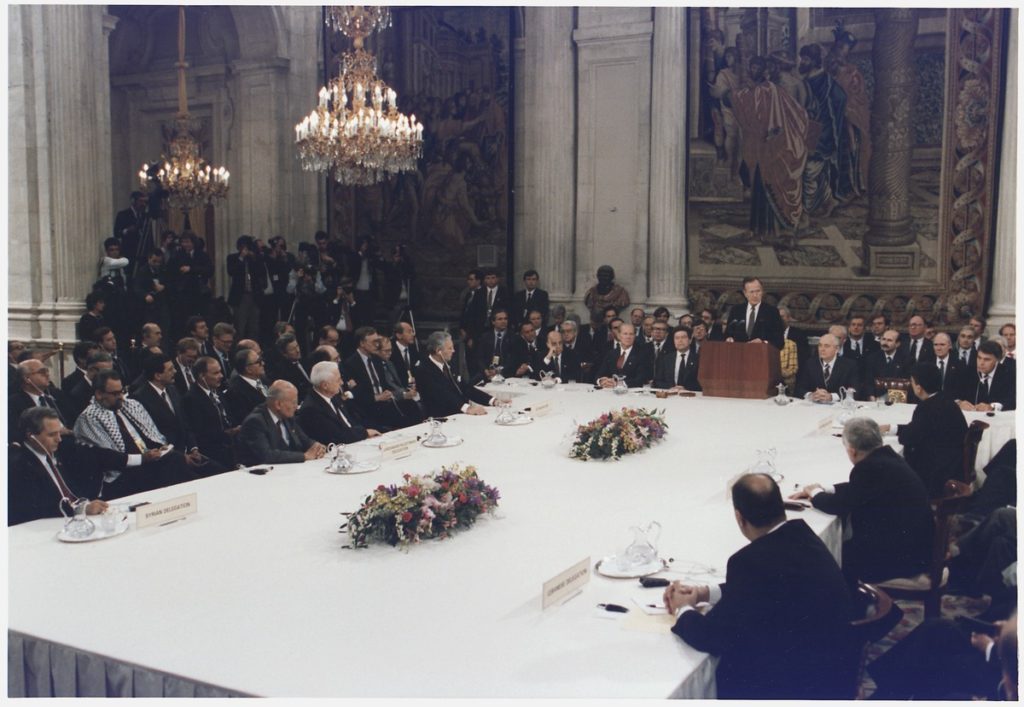
1992
Yitzhak Rabin elected prime minister.
1993
Oslo Accords signed: After secret negotiations in Oslo, Norway, Prime Minister Yitzhak Rabin and Palestinian leader Yasser Arafat sign the accords on the White House lawn. Oslo has three key components: mutual recognition between Israel and the PLO; the establishment of the Palestinian Authority (PA); and the division of the West Bank into Israeli and Palestinian spheres of authority. (Read more about trying to solve the conflict here.)
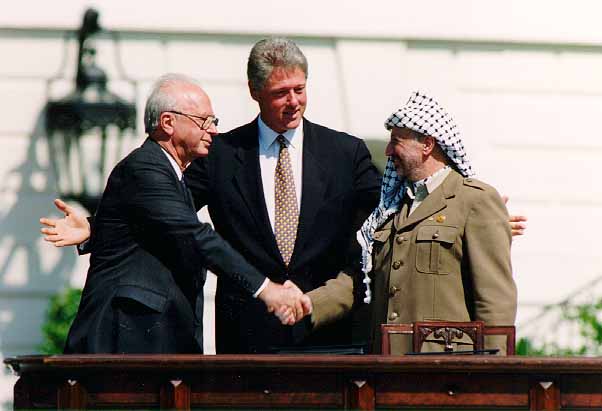
1994
Cave of the Patriarchs Massacre: Baruch Goldstein, an American-born Jew, walks into the Cave of the Patriarchs in Hebron and kills 29 Muslim worshippers and injures 125 before he is beaten to death. The massacre is one of the deadliest terror attacks in the history of the Israeli-Palestinian conflict.
Israel-Jordan Peace Treaty: Jordan becomes the second Arab country to sign a peace treaty with Israel.
Nobel Peace Prize awarded to Yitzhak Rabin, Shimon Peres, and Yasser Arafat, which they win for the Oslo Accords.
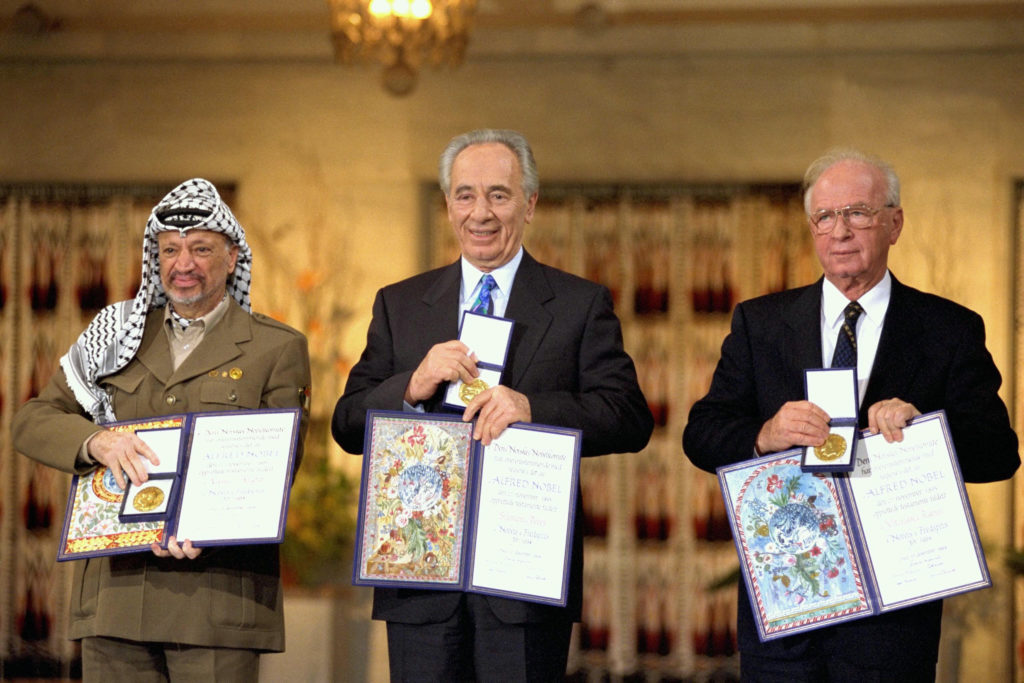
1995
Rabin assassinated: Yigal Amir, a Jewish extremist and Israeli ultra-nationalist, kills Yitzhak Rabin after a rally for peace. Amir believed Rabin’s peace policies endangered Jewish lives. Rabin’s assassination has disastrous effects on the peace process.
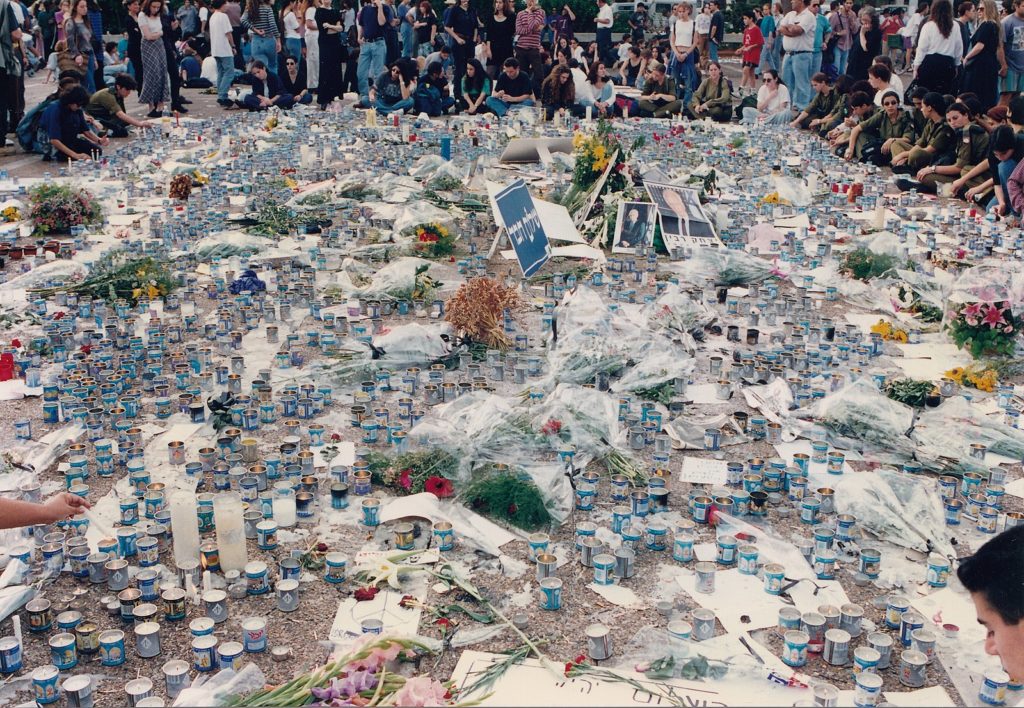
1996
Suicide bombing wave begins: Three suicide bombings on buses and a mall prompt a severe military crackdown by Israel and erode public faith in the peace process.
Operation Grapes of Wrath: a campaign by IDF to attempt to end Hezbollah’s attacks on northern Israel.
Netanyahu elected: Benjamin Netanyahu (Likud) comes to power for the first time.
1998
Wye River Memorandum signed by Netanyahu and Arafat, agreeing on steps to implement Oslo II.
1999
Ehud Barak elected Prime Minister.
2000
Lebanon withdrawal: Israel withdraws completely from southern Lebanon in May.
Barak-Arafat peace talks at Camp David, aimed at reaching a “final status” agreement, breaks down before that happens.
Second Intifada begins after Ariel Sharon visits the Temple Mount in September, sparking riots and protests.
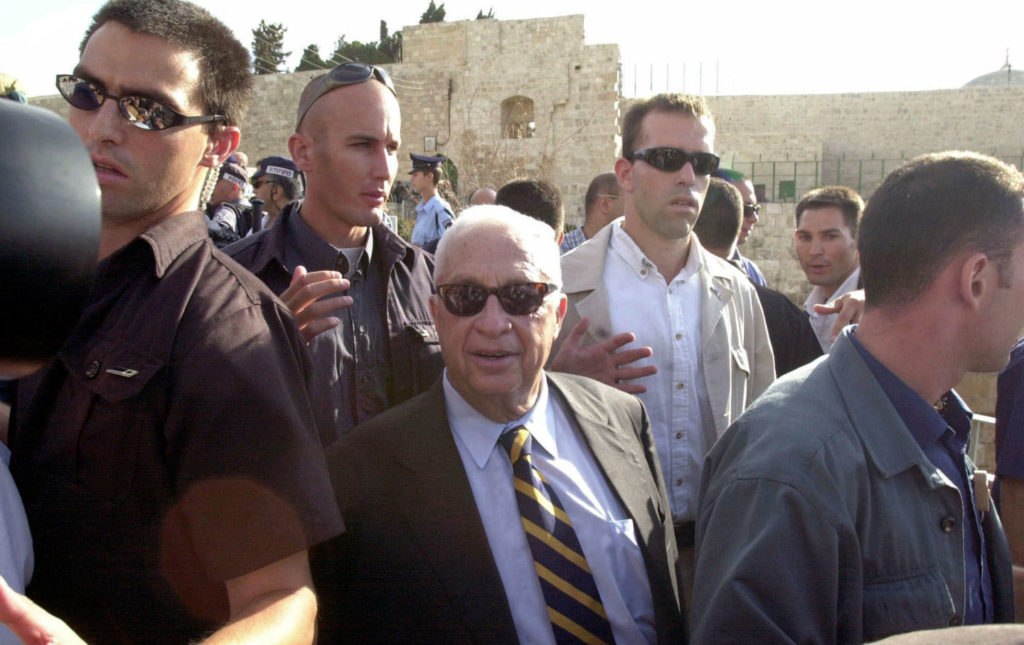
This intifada (lasting until 2005) sees Israel shaken by suicide bombings, rocket attacks, and other types of attacks. Israel meets this with deadly force. In over five years, around 1,000 Israelis and 3,000 Palestinians are killed. Skepticism around the peace process grows.
Barak resigns in December.
2001
Ariel Sharon elected, defeating Ehud Barak.
2002
Arab League peace proposal: the Arab League meet in Beirut and call for unilateral Israeli withdrawal from Arab territories and a “just settlement” of the Palestine refugee problem, in exchange for normalized relations between Arab nations and Israel. Israel never officially responds.
Passover Massacre: A Hamas suicide attack on a Passover seder kills 30; the deadliest attack during the Second Intifada.
Operation Defensive Shield: a military operation in the West Bank conducted during the Second Intifada, with the goal of thwarting terror attacks.
Security barrier planned: Israel begins construction of a security barrier between the West Bank and Israel. Palestinians refer to it as an “apartheid wall.” (Read more about the use of “apartheid” here.)
2004
Arafat dies at age 75 in Paris, after undergoing medical treatment. The circumstances surrounding his death are still unclear. He’s succeeded as head of the PLO by Mahmoud Abbas.
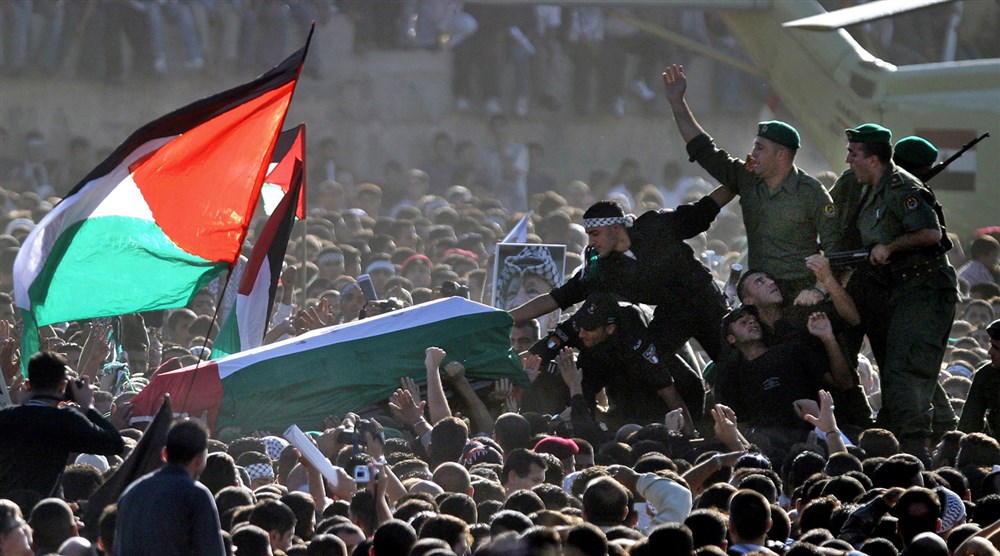
2005
Gaza withdrawal, ordered by Sharon, where nearly 10,000 Jewish settlers are removed from Gaza and the Israeli army withdraws from inside the Gaza Strip. (Read more here.)
2006
Hamas wins Palestinian legislative elections for the first time. Ismail Haniyeh becomes Prime Minister.
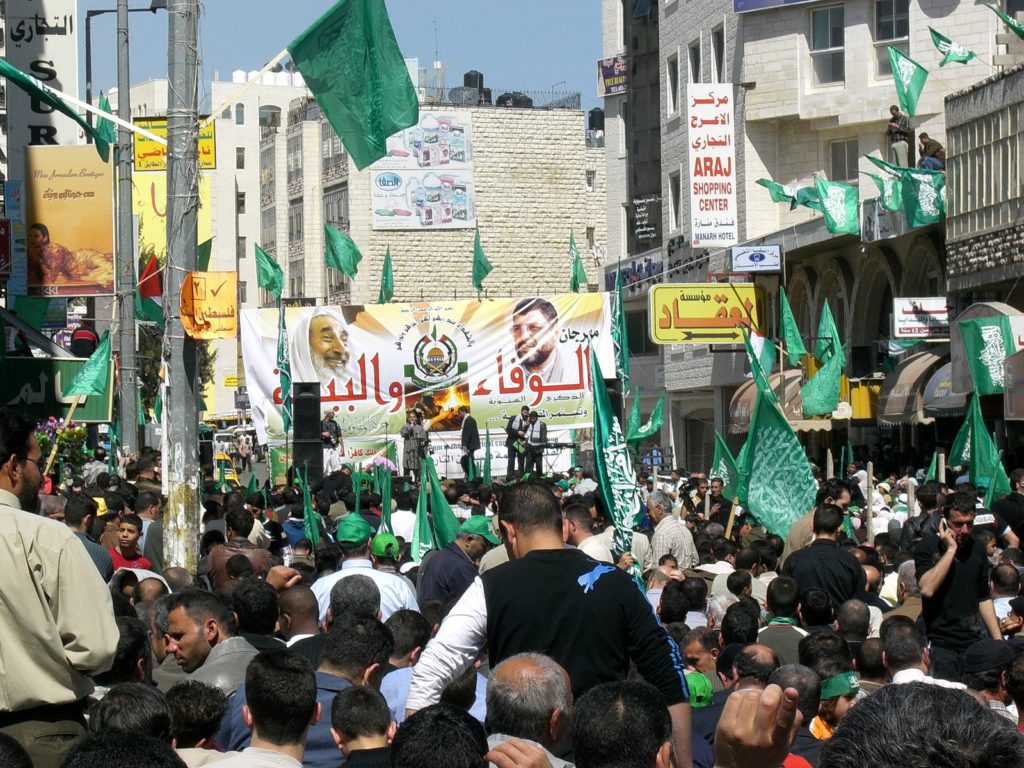
Hamas captures an Israeli soldier: Gilad Shalit is captured by Hamas during a cross-border raid.
July — August
Second Lebanon War: Hezbollah initiates the war with a cross-border raid on July 12 that kills three soldiers and captures two. Israel then attacks Hezbollah targets in Lebanon and launches a ground invasion of southern Lebanon. The conflict ends with a UN ceasefire.
2007
Hamas controls Gaza: Hamas fighters take over the Gaza Strip and remove all Fatah officials. (Read more here.)
2008
Abbas-Olmert peace talks: They ultimately fail, but it’s probably the closest the two sides have ever gotten to peace.
Operation Cast Lead: 22 days of fighting, beginning in December 2008 and ending in January 2009. Israeli goal is to stop Hamas rockets launching from Gaza into southern Israel; Hamas says its rockets are a response to Israeli military actions.
2009
Netanyahu elected (again).
2010
Gaza flotilla raid: Israel raids the Gaza Freedom Flotilla, six ships intended to break the Israeli blockade of Gaza; nine activists are killed.
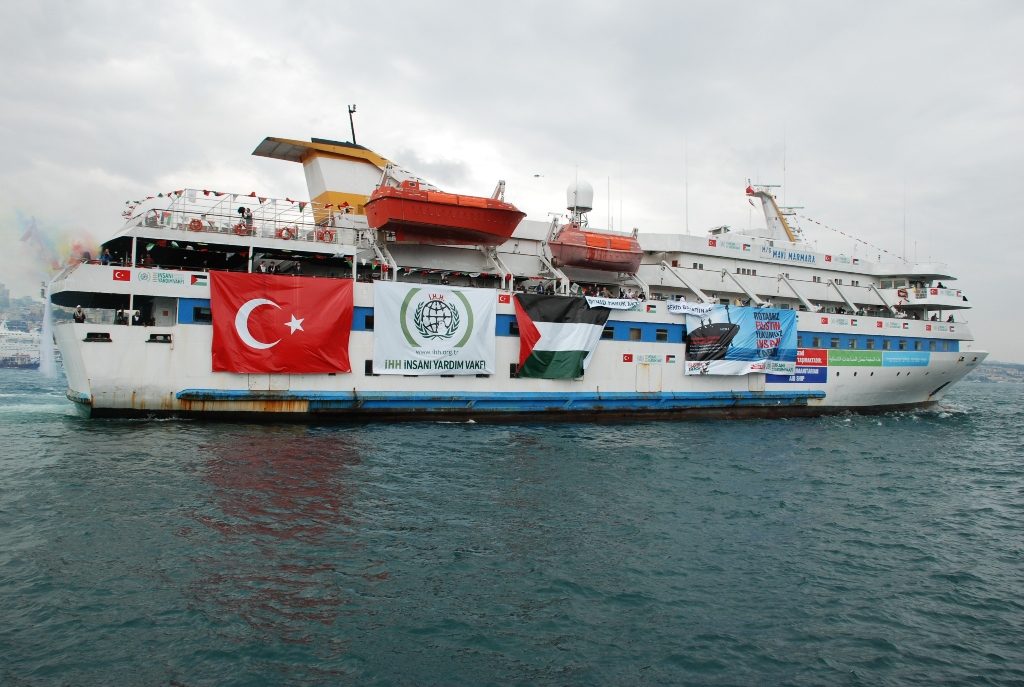
2011
Abbas submits a request to the UN to recognize Palestine, in an effort for the State of Palestine to be internationally recognized.
Shalit freed and prisoner exchange: Hamas and Israel reach a deal in which Gilad Shalit is freed in exchange for 1,027 Palestinian prisoners.
2012
Operation Pillar of Defense launched in Gaza in an effort to stop Hamas rocket attacks. A week after operation begins, a ceasefire (mediated by Egypt) is agreed upon.
2014
June
Three Israeli teens are kidnapped in the West Bank, resulting in a massive IDF operation to find them. Their bodies are later found near Hebron. In retaliation, a Palestinian teen is kidnapped, beaten, and burned alive by Jewish extremists.
July
The 2014 Israel-Gaza conflict, also called “Operation Protective Edge,” begins, again with the aim of stopping rockets from Gaza into Israel and destroying Hamas tunnels. A ceasefire is agreed upon in late August.
2015
Duma Firebombing: A Jewish extremist firebombs a Palestinian family home in Duma, killing an 18-month-old and his parents.
“Stabbing Intifada” begins; Palestinians try (and sometimes succeed) to kill Israeli civilians with knives.
2018
U.S. Embassy opens in Jerusalem, a move hailed in Israel and by some American Jewish groups, while drawing criticism from many other governments and fueling massive Palestinian protests. (Read more here.)
Palestinian activist Ahed Tamimi released. (Read more here.)
2019
Netanyahu elected (again). (Read more here.) (Actually, now there will be a new election. Read more here.)
Suez Crisis
The Suez Crisis refers to the invasion by Israel of Egypt in 1956, in coordination with France and England.
2014 Israel-Gaza conflict
Known to Israelis as Operation Protective Edge, this was a military campaign launched by Israel in 2014 in response to the kidnapping and murder of three Jewish teenagers by Hamas.
jihad
Jihad is an Arabic word meaning “struggle” that can refer both to holy war against nonbelievers and personal moral struggle.
Fatah
Fatah is the political party of Yasser Arafat.
Black September
Black September refers both to a conflict fought between Jordan and the Palestine Liberation Organization and to the terrorist group that carried out the massacre of 11 Israeli atheletes at the Munich Olympics in 1972.
PLO
The Palestine Liberation Organization was a group founded in 1948 to liberate Palestinian territories through force. Israel considered the PLO a terrorist group prior to the 1994 Oslo Accords.
Palestinian Authority
The Palestinian Authority is a Palestinian governing body established for the purposes of Palestinian self-government by the 1994 Oslo Accords.
Second Intifada
The Second Intifada was a period of Israeli-Palestinian violence sparked by the visit of Ariel Sharon to the Temple Mount in Jerusalem in 2000.
First Intifada
The First Intifada was a Palestinian uprising against Israel that began in 1987 and lasted for several years.
Oslo Accords
The Oslo Accords were a series of agreements signed by Israel and the Palestine Liberation Organization aimed at achieving a peace treaty between the sides and a final resolution of the conflict.
Camp David Accords
The Camp David Accords were a 1978 agreement between Egypt and Israel, negotiated under the auspices of U.S. President Jimmy Carter, which paved the pay for an Egyptian-Israeli peace treaty the following year, the first such agreement between Israel and an Arab state.
Six-Day War
The Six-Day War was a war between Israel and multiple Arab states in 1967 that resulted in Israel vastly expanding the territory under its control, including the disputed territories of the West Bank and Gaza Strip.
Yasser Arafat
Yasser Arafat was the chairman of the Palestine Liberation Organization and, following the Oslo Accords, the president of the Palestinian Authority. He died in 2004.
Knesset
The Knesset is Israel’s parliament.
Al-Aqsa Mosque
The Al-Aqsa Mosque is the name of the religious shrine that sits atop the Temple Mount in Jerusalem. The mount is the site from which Muslims believe Muhammad ascended to heaven and where the two Jewish temples once stood.
Golan Heights
The Golan Heights is a plateau captured by Israel from Syria in the 1967 war. It was effectively annexed by Israel in 1981.
Yom Kippur War
The Yom Kippur War was a 1973 conflict fought between Israel and a coalition of Arab states. It began with a surprise Arab attack on the Jewish Day of Atonement.
David Ben-Gurion
David Ben-Gurion was the first prime minister of the State of Israel.
West Bank
The West Bank is the territory captured from Jordan by Israel in 1967. It remains the core piece of disputed territory between Israelis and Palestinians.
Gaza
The Gaza Strip is a coastal territory bordered by Israel, Egypt and the Mediterranean Sea. The strip was occupied by Israel following the 1967 war and returned to Palestinian control in 2005.